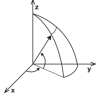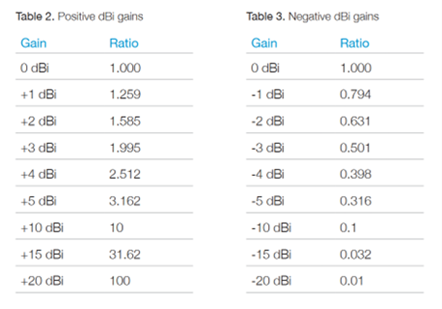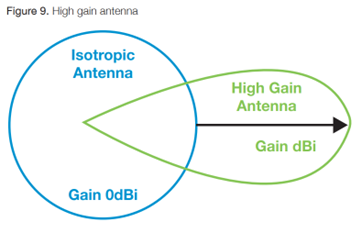An antenna’s radiation pattern and gain describe how symmetrically it radiates or absorbs electromagnetic radiation, depending on whether it is transmitting or receiving. These parameters are usually given for the frequencies at which the antenna is designed to operate, as they can vary with frequency.
The reference for radiation patterns/gain is an isotropic radiator or receiver, which is hypothetical and radiates or receives uniformly in all directions. Gain quantifies how an antenna deviates from an isotropic radiator or receiver, and the radiation pattern is a way of visualizing this deviation. The radiation pattern is plotted on three orthogonal planes (x, y, and z) to represent the three dimensions in which the antenna radiates or receives. The x and y planes are the azimuthal planes, and the z plane is the elevation plane.

The power density plot of an isotropic radiator, which radiates uniformly in all directions, will be the same in any plane (x, y, or z). The plotted power from an isotropic transmitter will be a perfect sphere. Gain is the measure of how an antenna deviates from an isotropic radiator or receiver and is measured on a logarithmic scale in units of dBi, which is a ratio and stands for ‘decibel relative to isotrope’.
A gain of 0 dBi represents the same power density as an isotropic transmitter, while a gain of +3 dBi represents a 100% increase in power density (doubling). For those unsure of what the logarithmic scale is, common dBi gains and their corresponding ratio are listed here:

There are three types of antenna radiation patterns: reference isotropic, omnidirectional, and directional. An omnidirectional antenna produces a field of approximately equal intensity in all directions along the azimuthal plane, but the power may vary on the elevation plane. A directional antenna radiates primarily in one direction. Remember that Gain refers to the direction in which an antenna focuses its power but does not necessarily indicate that an antenna is better for a particular application. A gain in power in one direction will result in a loss of power in other directions, which can be seen in the radiation pattern plot of a directional antenna.

Find our ‘New Datasheets” within our Antenna Selector Tool, by filtering on preferred character features which will narrow down to associated product PDFs, where you can access detailed information on antenna gain, including 2D and 3D radiation plots and a useful chart showing peak gain vs. frequency.

